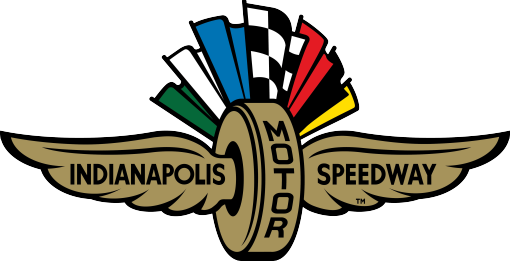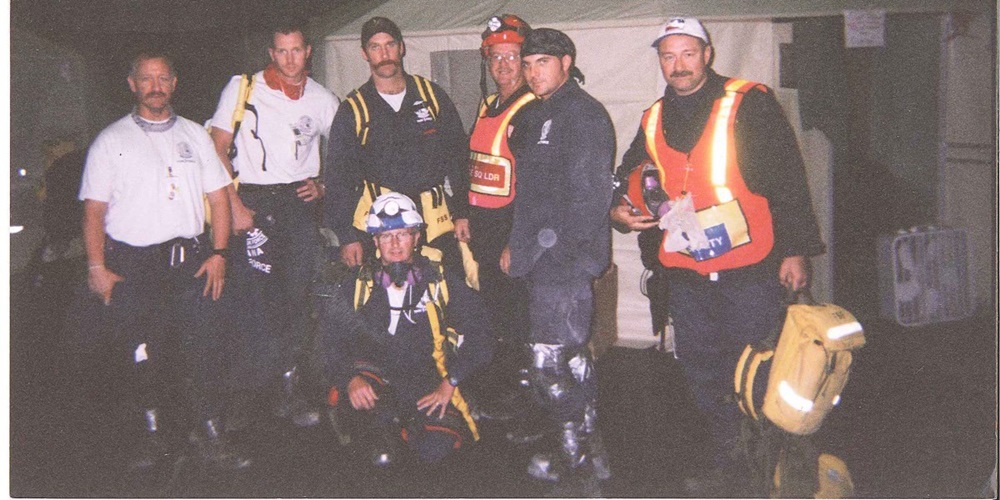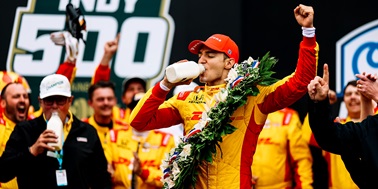Twenty years removed, Tim Baughman can still see the dust of the fallen World Trade Center, smell the burning embers and hear the noise from eight emotional days in New York, a horror the world refers to as “Sept. 11,” when two hijacked airlines were flown into the two 110-story towers, killing 2,573 people as part of the largest terrorist attack in U.S. history. Several hundred more people died in related attacks that morning in Pennsylvania and at the Pentagon in Washington, and an estimated 40 percent of the victims have yet to be identified.
Baughman, INDYCAR’s senior director of track safety and medical services and a longtime member of the AMR INDYCAR Safety Team, spent 43 minutes earlier this week detailing the events he and 51 other Hoosiers experienced as members of Indiana Task Force One, an emergency response group assisting with large-scale tragedies. Still scarred by the experience, Baughman conceded this conversation might have been his longest on the subject since returning, and it took a visit to the 9/11 Memorial in New York in 2018 to provide his first sense of closure.
Baughman spoke in intimate detail, of crawling down a three-floor escalator on his belly amid the “groaning, moaning, popping and shaking” of the unstable building inches above him, of the moment when eight colleagues were engulfed in a fireball rising 80 feet in the air, 50 feet in diameter. Baughman was sure the men had perished, and he wasn’t alone. At the sight of the blast, hundreds of people came running to help, stretchers in tow. Miraculously, all survived, although the Hoosier at the fireball’s escape point was badly burned.
Baughman remembers his first night at Ground Zero, when after removing 9 inches of dust from what would become his command center, he walked outside, enveloped by smoke and dust.
“You literally couldn’t see anything,” he said. “People were disappearing like they were walking into a cloud, and then they would reappear out of the dust. It was like nothing you can imagine.”
Often, a section of a damaged building would give way or adjust, creating a noise that would send people scattering. At one occurrence, Baughman grabbed a stop sign so he wasn’t engulfed by the herd charging toward him.
The emotion at the scene’s perimeter was compounded by families in search of loved ones. They would hand photographs to rescuers, pleading for hope that wouldn’t come. In spite of eight days of meticulous, exhaustive work, Baughman and his crew never found a survivor, something that haunts him as much as anything.
“Our mission from Day 1 is to save lives,” he said. “We were part of the largest rescue event in the history of the United States, and to not help anyone come out alive is my biggest heartbreak.”
As the U.S. honors the 20th anniversary of its largest-scale tragedy, Baughman has just one message.
“That we always remember those who perished on 9/11 – in New York, Pennsylvania and at the Pentagon,” he said. “We must not forget.”
***
INDYCAR will honor the fallen of 9/11 in a series of remembrances this weekend at Portland International Raceway, site of Sunday’s Grand Prix of Portland, and on video boards at Indianapolis Motor Speedway.
A call-out campaign for blood donations in partnership with the American Red Cross is underway and a commemorative charitable pin bearing the motto “Together We Stand” is available for purchase online at the Official INDYCAR Shop.
A moment of silence across Portland International Raceway will come at the exact moment when the North Tower of the World Trade Center fell – Saturday at 7:28 a.m. PT – and the IMS Scoring Pylon will pay tribute to members of the paddock who participated in response-and-recovery efforts.
INDYCAR’s former medical director, the late Dr. Michael Olinger, was among them. Coincidentally, he was in New Jersey that morning to present information related to FEMA’s emergency response to the bombing of the Alfred P. Murrah Federal Building in Oklahoma City, the deadliest act of homegrown terrorism in U.S. history, which had occurred six years earlier. At news of the World Trade Center attack, he drove immediately to New York to assist.
Matt Stewart, a longtime member of the AMR INDYCAR Safety Team working this weekend’s race in Portland, was at the time a 31-year-old firefighter in Indianapolis, having joined Indiana Task Force One only a year earlier. He had gone through extensive training, but this was his first call to action. There hopefully will never be another one like it.
***
Stewart was one of the eight men engulfed by the fireball Baughman described. More specifically, Stewart was one of the two men who went deepest in the hole, and he figured he has spoken of the horror of the moment “probably only four or five times” since returning to Indiana.
“It’s still a bit emotional because there was a lot to it, a lot to unpack,” he said. “We were that close to significant injury, or death.”
Electronic search devices and then-new robotics had discovered a door buried deep in the collapsed tower, and it was deemed to hold hope. Armed with an array of tools, lights and an air tank, Stewart and his partner descended an estimated 70 or 80 feet beneath the rubble, perhaps as much as nine stories.
Their path to the door began by inching down a fallen I-beam, using the sight of distant orange smolderings – “Like pumpkin jack o’lantern if you can imagine that,” he said of the small fires – to chart their course. The men dropped light sticks into the small opening to determine how far the potential passage went and what might lie ahead, and to their surprise a rather large open area seemed to await. If they could descend another 30 to 40 feet in those tight quarters, they might be rewarded.
Upon arriving at the jammed door, Stewart’s partner carefully used a circular saw to cut a triangle hole to crawl through, which led to a reasonably intact office thought to have been used by a parking attendant before evacuation. Just then, the building began to again settle, dropping pebbles slowly at first, then larger ones and chunks of plaster as the tension rose. Amid the heightened tension, the operation turned to retreatment.
“We started losing visibility pretty quickly because there was an insane amount of dust,” Stewart said. “We just left all of our tools there, figuring that carrying them out would slow us down, and we got about halfway back to the exit.”
While on the I-beam, a pressure built behind them. Stewart remembers the air being sucked out of the passage followed by a bright flash of heat that overwhelmed them.
“There was this incredible whoosh like when you light a gas grill, but times a thousand,” Stewart said. “Everything lit up, this huge flash fire that went straight up the hole that we were climbing out of it.
“You could feel the heat through our protective equipment, but it only singed our hair and some places on our fire suit. We were off to the side a bit, which probably helped us, but we still were disoriented for a few minutes. We were like, ‘OK, let’s regroup.’ Our only option was to haul ass to the exit.”
At the top of the hole, the 6-foot-5, 240-pound Stewart said a crew member nearly half his size literally yanked him out. Covered in soot and likely diesel fuel from the World Trade Center’s backup generators stored in the basement, Stewart said there was a brief moment of relief and celebration before realizing that the one member of the group had been badly burned.
Stewart wasn’t injured, but he quickly realized his body had been fueled by adrenaline. As he tried to walk, his legs gave out, and he had to be helped off the heap as other rescue crews rushed in with stretchers in expectation of transporting additional members of his team.
Before the group of Hoosiers were loaded into ambulances to be taken to nearby Bellevue Hospital, Stewart said a grizzled, likely retired New York battalion fire chief grabbed his face by two hands and offered stern words.
“We’ve lost so many guys, we don’t need to lose more,” Stewart remembers the man saying. “To me, it was a powerful moment, the most impactful moment of that incident.
“I wish I knew that man’s name, but to this day I could pick him out of a lineup.”
***
From start to finish, Indiana Task Force One members were on the job 10 days, and it all happened so fast.
The men were called into deployment within 90 minutes of the World Trade Center’s North Tower collapsing and within five more hours, at about 5:30 p.m., they were boarding buses to New York, with police escorting their convoy including more than a dozen support vehicles all the way to Ground Zero. The 15-hour ride through the night with concerned minds didn’t allow for much sleep.
“Everybody was just trying to get their arms around what had just happened,” Baughman said. “When we got there, we found two or three thousand people working, using five-gallon buckets, digging with their hands, just rescuing people. Priests, businessmen, people everywhere.”
The bank tower near where Indiana Task Force One was based was in such disrepair that it later needed to be torn down. From that vantage point just a block or so west of the World Trade Center, Baughman thought he could see the scope of the disaster. A ride in a 100-foot lift proved otherwise.
“That’s when I realized we were just one of four command posts and only seeing 25 percent of (the damage),” he said. “Later, we went 70 stories up (in another building) and I remember laying on my belly on the roof looking down.
“It was like, ‘Holy, cow!’”
When remains were found, horns sounded and the lines of people working shoulder to shoulder stopped long enough to pay their respects. U.S. flags were draped over the fallen.
“There was reverence even amid the chaos,” Baughman said. “Then everyone would go back to work.”
Stewart has been one of the first on the scene of many of INDYCAR’s worst accidents over the past two decades, but he could not have comprehended a disaster like this.
When Indiana Task Force One returned to Indianapolis, the buses were greeted at Monument Circle to much fanfare. Baughman couldn’t stomach it.
“We were hailed as heroes, but I tell everybody that I was embarrassed by that,” he said. “The 343 firefighters that died after going into (the World Trade Center) to rescue people … I guess I hold ‘hero’ in a different status than other people do.”
As a footnote to the story, all members of Indiana Task Force One are given regular health screenings as part of the World Trade Center National Health Registry, watching for effects of being so close to the toxins of the burning buildings. Baughman and Stewart have shown no signs of ill effects, but Baughman said 11 of members of the Indiana delegation have battled cancer, including Olinger, who died in November 2019.
In addition to being part of the Oklahoma City bombing and World Trade Center recovery efforts, Olinger was similarly deployed by FEMA to disasters involving the Space Shuttle Columbia crew, the Atlanta Olympics bombing and Hurricane Katrina, among other incidents. Like those who perished on 9/11, his life and heroics are still remembered.
Today, five members of the AMR INDYCAR Safety Team are active members of Indiana Task Force One. Stewart is on his second stint.




